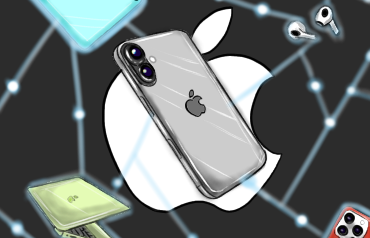Fans lined up at stores worldwide on Sept. 20 as Apple launched its new iPhone 16 and iPhone 16 Pro models.
A year after the release of the iPhone 15, Apple came back with its newest model, which incorporates the latest features including longer battery life, better water and dust resistance, text effects, integration of AI and a camera control button.
Within these, one of the features most talked about is the camera control button, a function dedicated to solely taking pictures. With touch and force sensors embedded within, the button can control various photography actions such as zoom and depth, as well as support both landscape and portrait modes. New photographic styles have been added to the model as well.
“I like the camera button the most,” Hajin Park (12) said. “It’s really good for me because I like to take pictures and record videos. So, it’s really easy to control my camera.”
According to Photutorial, an estimated 1.94 trillion photos will be taken worldwide, of which 94% of them are taken with smartphones. The number of photos taken annually across the globe has been demonstrating an upward trend, and this is expected to continue as numbers are expected to reach 3 trillion photos by 2030. With such an exponential growth in humanity’s photography obsession, smartphones are placed at the forefront of such an inclination. Better quality is constantly demanded, hence the topicality of the iPhone’s new camera control functions is understandable and likely attributable to this reason.
Accordingly, we see past iPhone models come with an upgraded camera system in some form, whether that be dual-cameras, light control or wider editing options.
Since the very first iPhone was released in 2007, Apple products have had a tight grip on customers, repeatedly creating lengthy lines of people in front of Apple stores around the world, buzzing with excitement before the release of a new model.
In the United States particularly, Apple has a dominant presence in the technology market. While globally Android users outnumber iPhone users, in the U.S., iPhones hold a market share of 60.77%, according to Backlinko, and has been increasing since 2009. Even in a school setting, a good majority of students use iPhones.
“Everyone uses Apple products,” Park said.
Park attributed the AirDrop feature as one of the reasons why he finds Apple products useful.
“The AirDrop [function], it’s really beneficial to use that,” Park said. “When I send my video to my friends, then AirDrop is really helpful because I don’t have to send it through email or other things, so it’s really good.”
Apple released Apple Watch Series 10, the new black titanium Apple Watch Ultra 2, AirPods 4, and new colors for AirPods Max on the same day as the iPhone 16 lineups.
“There’s a common strategy called planned obsolescence,” Marketing Principles, Accounting Principles and Spanish 2 teacher Rafael Ancona, said. “A lot of technology companies will use it where they plan for a product to be obsolete after a certain amount of time. What does that mean: for a user or a consumer, you have to buy the newer version of it. So as far as a marketing standpoint goes, it’s obviously a genius strategy, because they get a lot of people to buy new things that they don’t use.”
While Ancona thinks that from a societal and personal standpoint, there also are other different analyses to consumer behavior, consistent release of new gadgets over a short period of time could be considered one of many marketing strategies.
“A publicly traded company like Apple has a thing called a fiduciary responsibility to increase shareholder value,” Ancona said. “[The] perfect way to [increase its value] is to get people to buy more products. If they just kept pumping out the iPhone 8, there would be less likelihood that they would continuously increase sales than if they continuously upgraded.”
iPhone 16 is priced starting at $799 and iPhone 16 Pro from $999.
Another service that may be influential in serving as a stimulant for customers to upgrade their devices could be the trade-ins. To purchase a new product, current users can turn in their used device for credit and apply it towards the selected product. The trade-in values for devices reduce as it grows older.
“[This] makes perfect sense if you want to incentivize people to purchase a new iPhone,” Ancona said. “What better way to incentivize them to say, ‘hey, we’ll give you a little bit more money for your iPhone if you trade it in now and buy the new iPhone,’ versus if you waited a year.”
iPhone 16 also introduced greater storage. In a society where activities from schoolwork, jobs and entertainment are increasingly transitioning digitally, updated features that seemingly run in accordance with these trends may be playing a key role in the iPhone’s popularity in the U.S. and allowing the continuous attraction of customers.
“A lot of marketing is psychology,” Ancona said.
Regardless of brand, presentations of new technology are astonishingly exciting — it is an indication of how fast technology is progressing and raises wonders about what imaginations could be made possible next in the future.
“I used to use the iPhone 11 Pro Max,” Park said. “So it’s a big upgrade for me, so it’s really good. I like it.”










